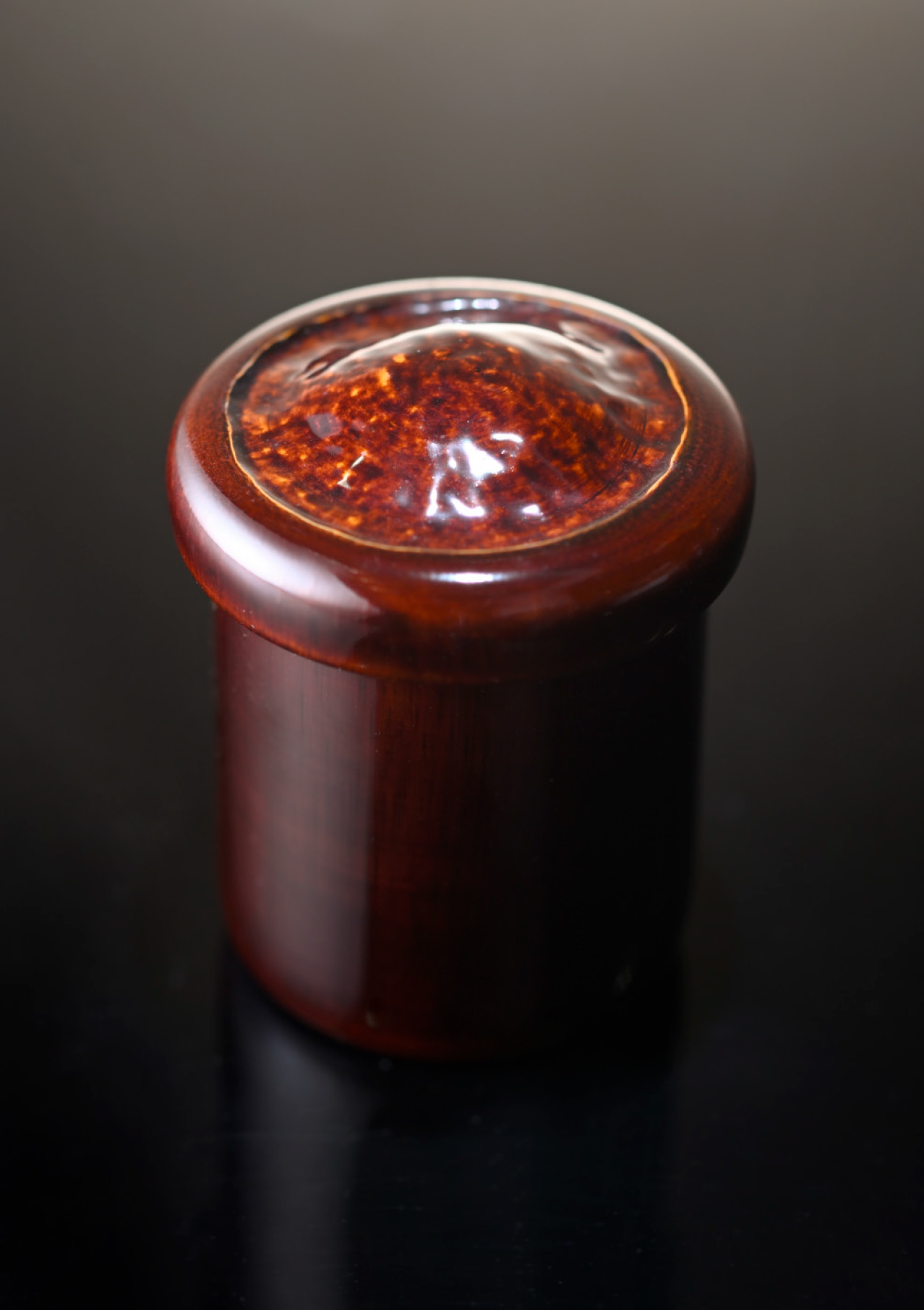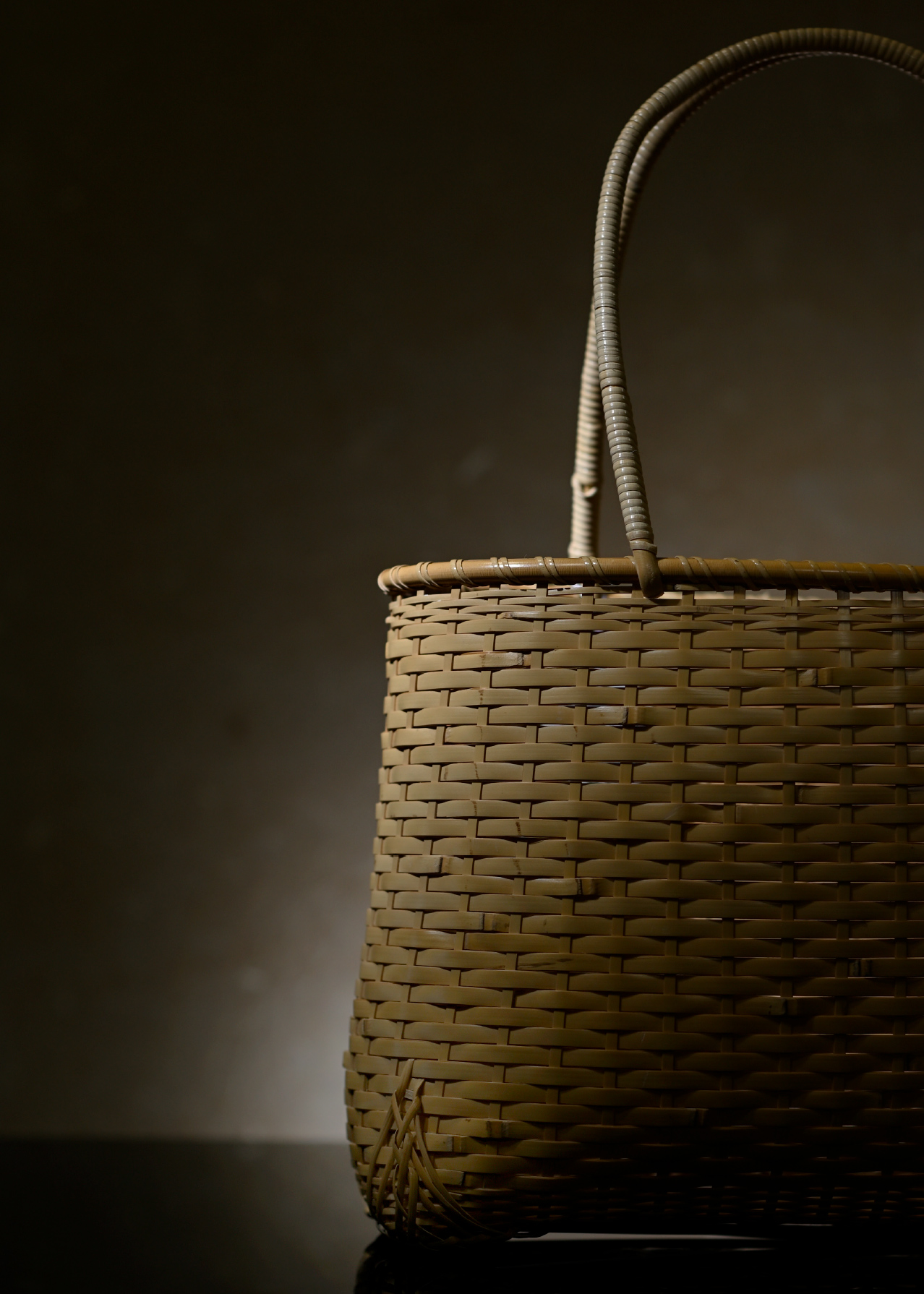京竹工芸 京都竹工芸品協同組合
KYO-TAKEKOUGEIBAMBOO CRAFT 1
1
- 薄茶器のひとつ、竹金輪寺棗。
竹は、縄文時代(紀元前14000年〜紀元前4世紀)の遺跡からも出土するほど古くから日本で活用されてきた自然素材。平安時代(8世紀後半)からは建材としても使われるようになり、武器や農耕・漁猟の道具などの生活用品にも広がりました。鎌倉時代(13世紀)から室町時代(14〜15世紀)にかけて発展した茶の湯においては、茶杓、茶筅、柄杓、花入などさまざまな道具が竹で作られ、欠かせない素材となります。長らく宮廷文化の中心地であり、多くの茶道、華道の家元が本拠地を構える京都においては、必然的に極めて洗練された技術が発展しました。その伝統技術は、日常生活の道具から照明などのインテリアアイテム、アート作品、洋装・和装を彩るバッグなど、さまざまな製品に昇華され、現代の暮らしに活かされています。
Bamboo is a natural material that has been used in Japan since ancient times, with artefacts dating back to the Jōmon period (14000 BC - 4th century BC). From the Heian period (2nd half of the 8th century), it was also used as a building material, spreading to everyday items such as weapons and agricultural and fishing tools. When the tea ceremony rose to cultural prominence from the Kamakura period (13th century) to the Muromachi period (14th to 15th centuries), bamboo became an indispensable material for tea scoops, whisks, ladles, as well as flower vases. Kyoto developed the most sophisticated techniques of bamboo craftsmanship, as befitted the center of court culture and the home of the major tea ceremony and flower arranging houses. These traditional techniques have found an exciting contemporary application in interior design items such as lighting and art works, as well as various everyday accessories, including handbags suitable to accompany both Western and Japanese clothes.
 2
2
- : ござ目編みの手提げ。
(1,2 ともに西河株式会社)
1: Kinrinji natsume, a tea caddy for usucha (a method for making matcha). 2: Knit stitch handbag. (1,2 Nishikawa)

